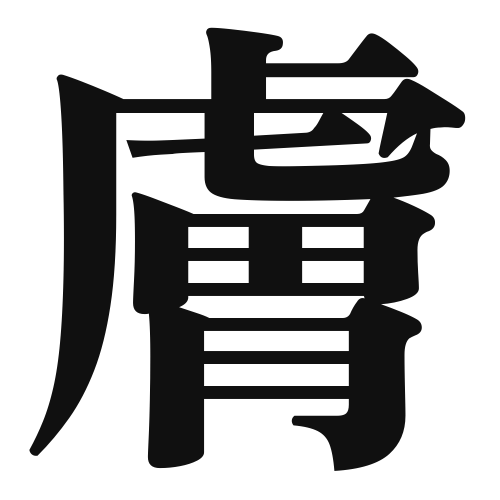1. Overview of Meaning
The kanji “膚” (pronounced “ha” or “hifu”) means “skin.” It refers to the outer layer of the body that covers and protects the internal organs and tissues.
2. Formation and Radical
Formation of the Kanji: The kanji “膚” is a phonetic compound (形声文字) that combines the radical for “meat” (肉) with a phonetic component that suggests its pronunciation.
Radical: The radical of “膚” is 肉 (niku), which relates to flesh or meat, indicating its connection to the body.
3. Examples of Usage
Common Words and Phrases:
- 膚色 (はだいろ, hadairo) – skin color
- 膚荒れ (はだあれ, hadaare) – skin roughness or irritation
Example Sentences in Daily Conversation:
- 彼女の膚はとてもきれいです。 (かのじょのはだはとてもきれいです。) – Her skin is very beautiful.
- 冬になると、膚が乾燥します。 (ふゆになると、はだがかんそうします。) – My skin gets dry in winter.
4. Synonyms and Antonyms
Similar Kanji:
- 皮 (かわ, kawa) – skin or hide, often refers to the outer layer of animals.
- 肉 (にく, niku) – meat, which refers to the flesh of animals, but not specifically the skin.
Antonyms:
- 骨 (ほね, hone) – bone, which is the hard structure beneath the skin.
5. Cultural and Historical Background
Relation to Japanese Culture: In Japanese culture, skin is often associated with beauty and health. The concept of “美肌” (びはだ, bihada) refers to beautiful skin, which is highly valued.
Proverbs and Idioms:
- 「肌で感じる」 (はだでかんじる) – to feel something intuitively or directly, emphasizing the sensitivity of the skin.
